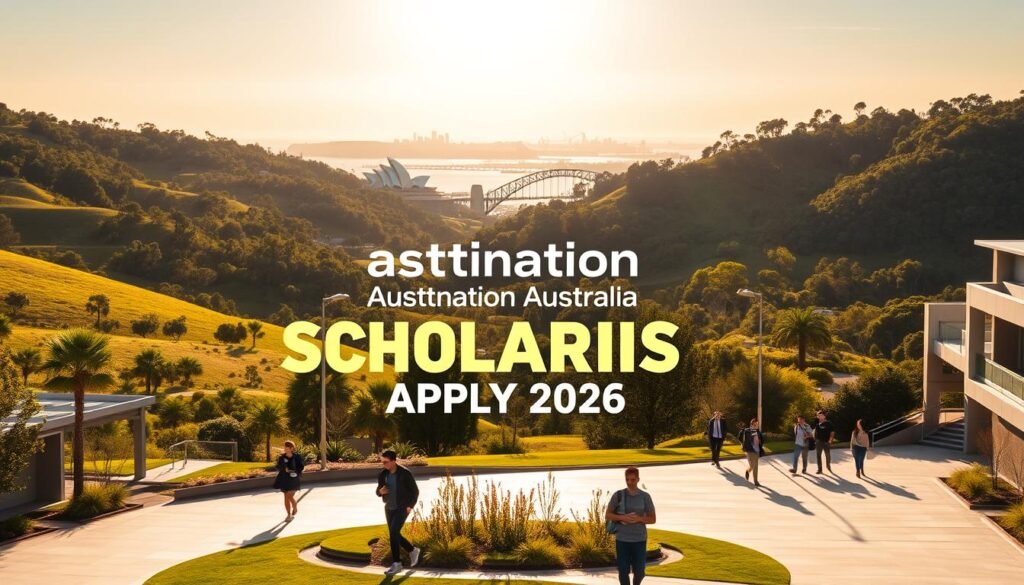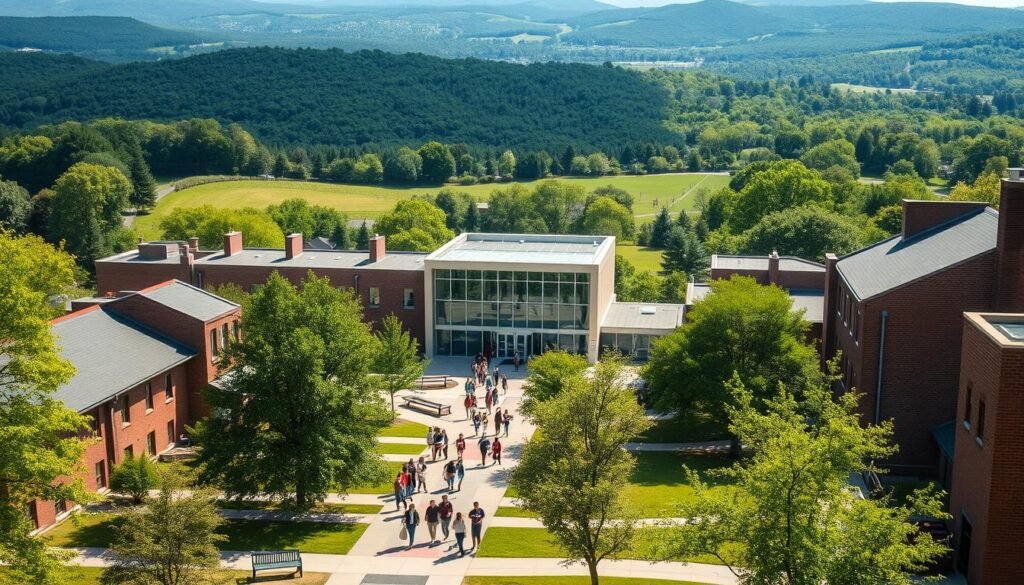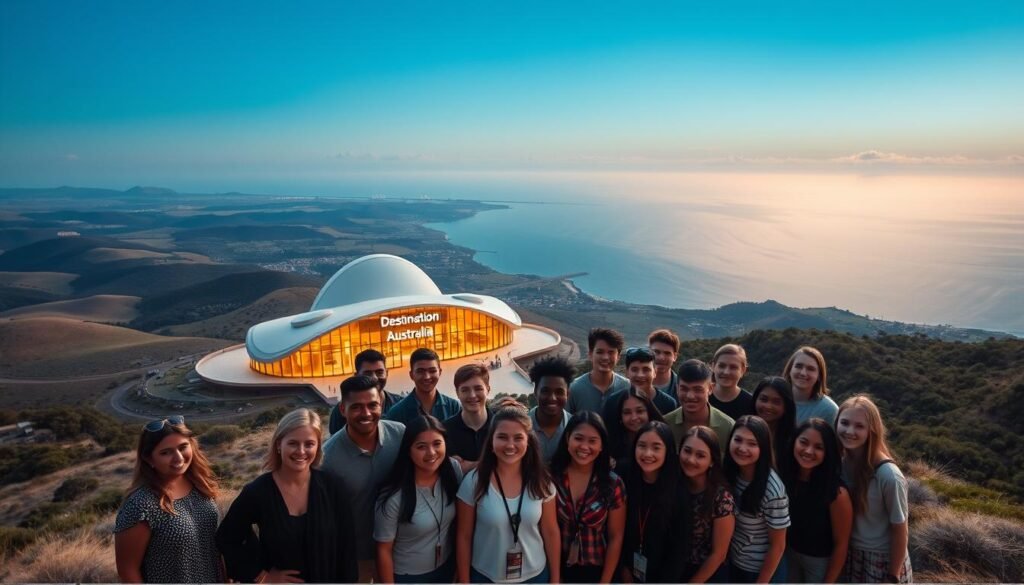
Surprising fact: in 2023 the program funded 480 awards across 83 campuses and offered up to AU$15,000 per year to help with living and accommodation costs.
You’ll get clear, practical information about how the scholarship works, who it helps and what to expect when you plan to study in a regional campus. This guide explains the funding, typical eligibility rules and the kinds of courses that have been supported.
Who benefits: both domestic and international students have taken part, enrolling full‑time at regional campuses and living in the area while they study. You’ll see what evidence providers usually require and how the application process runs through eligible universities and TAFE portals.
By the end of this section you’ll have a simple action plan to check providers, confirm your eligibility and prepare documents early so your 2026 application is ready.
Make your Australian education dream real in regional Australia
Regional campuses offer a practical route to world‑class study, closer community ties and clearer job pathways.
The program aims to attract students to regional and remote areas and match national skills needs. Recent rounds made hundreds of places available across many campuses, supporting courses that feed local workforces.
You’ll find smaller cohorts, personalised support and strong industry links in fields like health, education, engineering and agri‑tech. That means your studies can align with real jobs and local employers.
Life in regional areas often brings lower living costs, easier commutes and quick access to the outdoors. Community involvement volunteering, clubs and events also boosts your CV and networks.
- More personalised course support and practical placements.
- Scholarship funds made available across many areas to reduce financial stress.
- Opportunities to contribute to local communities while you study.
«Studying regionally can give you hands‑on experience, stronger local contacts and a clearer path into work.»
For practical guidance and listings of funded opportunities, see this overview of fully funded options and a student grants directory to help narrow choices: fully funded scholarships and student grants.
Eligibility at a glance for the Destination Australia scholarship
Start by checking the basic eligibility points so you know if the scholarship is a realistic option.
Core requirements are straightforward. You must be an international student with a current visa or be an Australian citizen/permanent resident.
Who can apply
You need full‑time enrolment at an eligible provider and to live in the regional area from the start and during each session.
Course load and campus rules
Some campuses insist on internal, on‑campus study. Providers check residency at each census date and confirm ongoing eligibility.
Extra criteria for some domestic students
Certain providers, for example Charles Sturt, limit awards to domestic students from underrepresented groups (low‑SES, first in family, CALD, disability, First Nations).
Ongoing checks and documentation
- Maintain required GPA (CSU example: 4.0+) and meet entry qualifications and English requirements.
- Limited absences for compulsory placements may be allowed; longer placements can need departmental approval.
- Prepare ID, visa/citizenship proof, qualifications and English evidence before you submit.
Final tip: eligibility and exact rules vary by provider and campuses, so confirm the specific requirements for your chosen courses and area.
Where you can study: eligible providers, campuses and courses
Across state and territory campuses, you’ll find examples of providers that have taken part in recent rounds.
New South Wales and Victoria examples
In 2023, 27 providers across 83 regional campuses made 480 awards available. In NSW, look at UNE Armidale and Charles Sturt campuses in Albury‑Wodonga, Bathurst, Dubbo, Orange, Port Macquarie and Wagga Wagga.
Victoria hosts La Trobe (Bendigo, Mildura, Shepparton), Federation University (Ballarat, Gippsland, Wimmera) and Deakin Warrnambool.
Queensland, South Australia and Western Australia highlights
Queensland examples include UniSQ Toowoomba, USC Fraser Coast and CQU sites in Bundaberg, Cairns, Gladstone, Mackay and Rockhampton.
South Australia has UniSA Mount Gambier and Flinders Renmark, while WA options include ECU South West and Notre Dame Broome.
Tasmania and Northern Territory options
In Tasmania check University of Tasmania campuses at Cradle Coast, Hobart and Launceston, plus TasTAFE sites.
Northern Territory routes include Charles Darwin University (Alice Springs, Casuarina, Palmerston), Flinders NT and Batchelor Institute.
- Courses commonly supported: nursing, paramedicine, education, physiotherapy, IT, business and agriculture.
- Provider notes: some publish full lists of eligible courses and designated campuses (for example, CSU).
- Practical tip: allocations change each year, so confirm what is made available for your chosen course and year.
«Shortlist a region, check the provider page and confirm current intakes and places.»
Destination Australia scholarships apply: how to submit a strong application
Get step‑by‑step guidance to build a strong application that stands out to selection panels.
Documents and evidence to prepare
Gather your passport/ID, visa or citizenship proof, academic transcripts and certificates, and English test results such as IELTS.
If financial evidence is required, include Centrelink statements, a Health Care Card, recent payslips or ATO Notices of Assessment.
Your personal statement: goals and community impact
Write a sharp personal statement that links achievements to clear goals. Explain why you chose the course, the campus and how you will contribute locally.
Follow provider prompts. For example, ECU asks for 500 words answering why you chose the degree and how the scholarship will help; selection often depends on the content and clarity of this statement.
Applying via university portals and key steps
Use the provider portal to upload files in requested formats and name them clearly. Double‑check forms, file names and all details before submission.
- Complete the online form and upload documents.
- Proofread your personal statement and scan transcripts clearly.
- Track your submission and respond quickly to any follow‑up.
Troubleshooting common portal issues
If the portal glitches, try Chrome, clear your cache, avoid having multiple applications open and switch devices if needed.
Contact Student Central or the scholarships team for timely advice if receipts don’t arrive or you see errors. Remember that payments may be confirmed after census and late applications are usually not accepted.
Tip: submit early, keep copies of all documents and be ready to accept an offer promptly.
Funding, dates and conditions you should know
Understanding how funds arrive and when key deadlines fall helps you plan your year of study. Read the payment model, the timing of offers and the conditions that keep you eligible.
Scholarship value and payments
The scholarship is worth up to AU$15,000 per year, typically split into two session payments (about $7,500 each). Payments are made to your nominated account by EFT once census checks confirm you remain enrolled full‑time and living in the regional area.
Application windows, offers and census dates
Watch application windows and outcome notices closely. Many offers are conditional until the census date. If you miss a census or an offer expiry you may lose funding, and late applications are usually not accepted.
Visa, tax and leave rules
Your visa status and living address must stay current with the provider. Full‑time student scholarship payments are generally tax exempt, but Centrelink or ATO rules can vary seek independent advice.
Tip: a scholarship is administered by each provider but funded by the australian government, so check provider conditions for fees, leave and placement rules.
- Payments can be recouped if you no longer meet rules.
- Deferral is rarely allowed; leave pauses payments and may need re‑eligibility.
- Fees and tuition are separate—budget beyond the award.
What this means for your studies, career and regional community
What this means for your studies, career and regional community
Living and learning regionally helps you build practical experience and local networks in skill‑shortage fields such as health, education and engineering across NSW, VIC, QLD, SA, WA, TAS and NT.
That extra time made possible by a targeted scholarship lets you focus on placements, projects and contacts that improve your employability. Providers assess applications via their portal and weigh your personal statement alongside academic progress.
Be realistic about requirements: full‑time enrolment, regional residency and census checks matter. Keep documents ready, follow the form instructions and contact the scholarships team early for advice.
Quick checklist: shortlist campus and course, confirm you are an eligible scholarship candidate, draft your statement, submit applications on time and plan for a future grounded in local industry connections.

